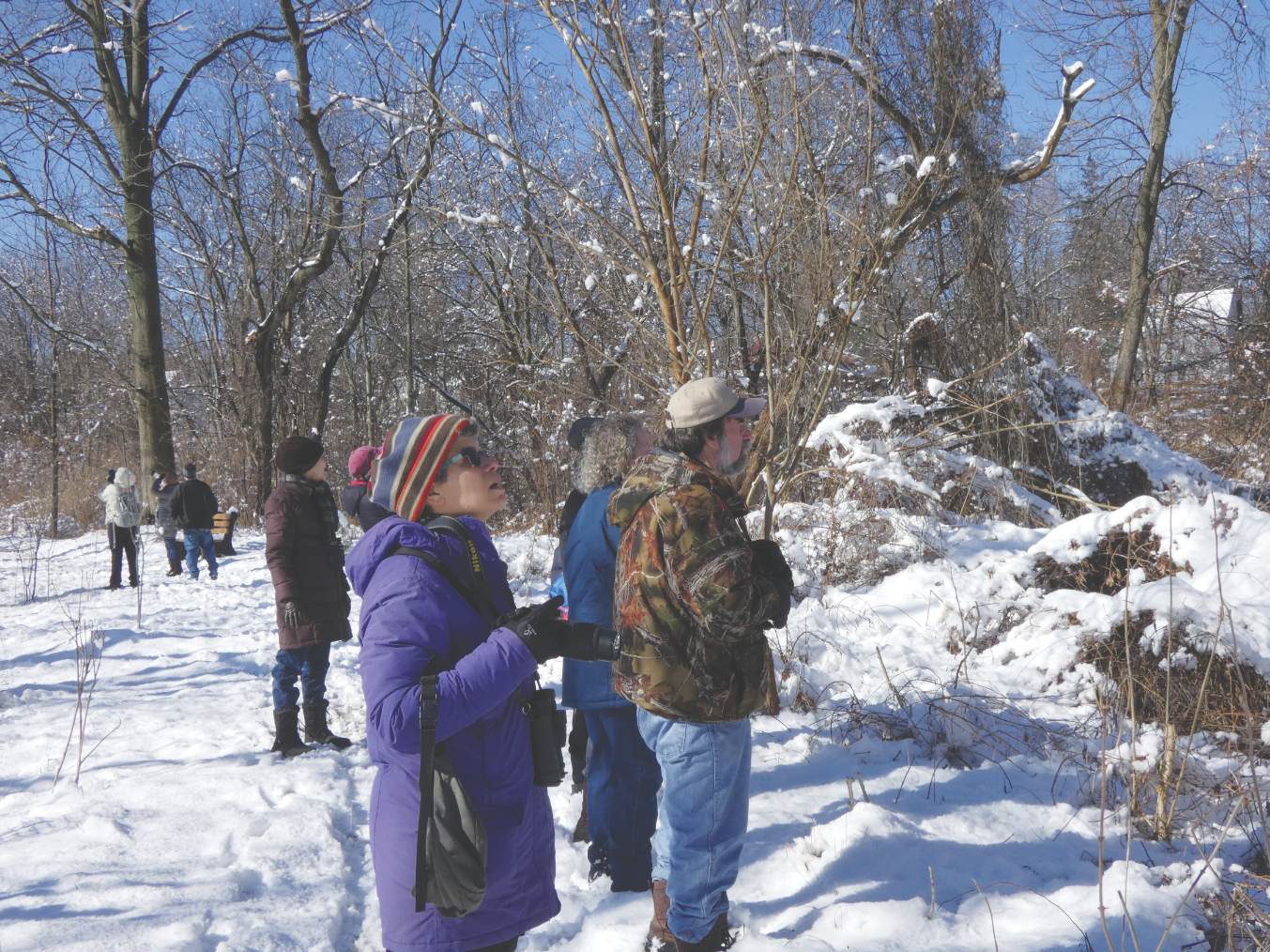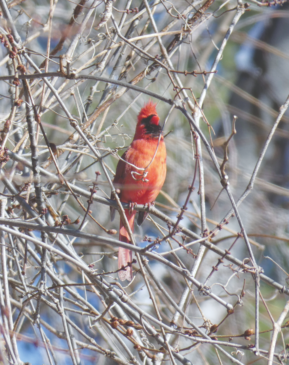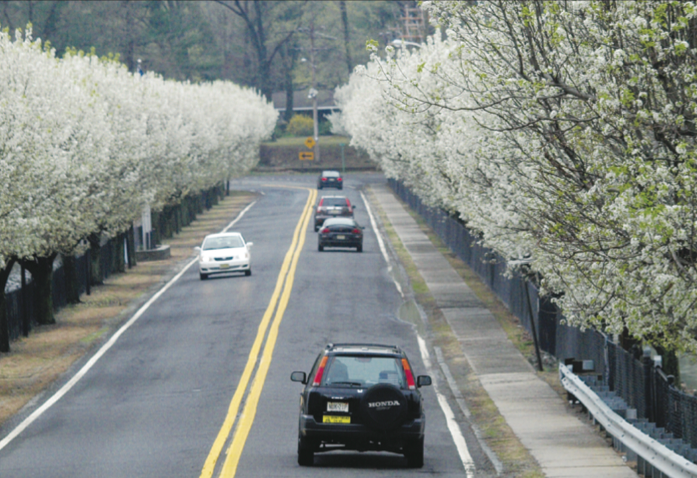
[slideshow_deploy id=’899′]
BY STEVE KELMAN
CORRESPONDENT
Bergen County, New Jersey — A group of Bergen County Audubon members did not let a previous evening’s snow storm get in the way of the annual Great Backyard Bird Count, where more than 30 species of birds were counted.
Bergen County Audubon President Don Torino led volunteer participants on snowy and muddy trails throughout the 46-acre park on Sunday, Feb. 18. Various bird species were also observed and counted at two feeder sites located within the park.
Among the species counted were a red tailed hawk, four white breasted nuthatches, two adult bald eagles and a pair of rusty blackbirds.
“Of all the species that we count today, [the rusty black birds] will be the most important,” Torino said.
According to the Cornell Lab of Ornithology, the rusty blackbird is one of “North America’s most rapidly declining species. The population has plunged an estimated 85 to 99 percent over the past 40 years.”
Torino said that volunteers who participate in the bird count “are taking part in citizen science.”
“The information that we gather is really important and can be used to track climate change and habitat loss,” he said during a lecture on the bird count given at the Puffin Cultural Forum the week before the bird count took place.
Torino explained that scientists who study birds “can’t be everywhere.” He said the Great Backyard Bird Count, which is a global event, provides scientists with “longterm records of birds, longterm trends and year-to-year changes (as per in migration).”

Torino said that 2018 has been designated “The Year of the Bird” by numerous environmental organizations, including National Audubon, the Cornell Lab of Ornithology and National Geographic due to the fact that this year marks the centennial of the passage of the Migratory Bird Act. The legislation makes it unlawful to pursue, hunt, capture, or kill birds that are listed as migratory birds, a list that consists of over 800 species.
This legislation is currently under attack in the U.S. Congress, Torino said.
According to information published by the Audubon Policy Office back in November, U.S. Rep. Liz Cheney (R-WY) “snuck an amendment into a larger energy bill that would gut the Migratory Bird Act.”
The bill would “turn back decades in protecting birds and give industries a free pass to kill birds with impunity,” according to information from the policy office’s report.
After the walk, Torino reported the bird tallies to the website birdcount.org.
The great backyard bird count took place Feb. 16-19.
Those who participated had until March 1 to enter data on the bird count website.
Below is a list of the 34 species recorded at Teaneck Creek Park during the outing: mourning dove, three; red bellied woodpecker, one; downy woodpecker, two; black capped chickadee, two; dark eyed junco, one; white-throated sparrow, one; song sparrow, one; northern cardinal, one; red-winged blackbird, two; house finch, seven; American goldfinch, one; house sparrow, one; tufted titmouse, one; brown-headed cowbird, two; mallard, 16; American black duck, one; black vulture, five; bald eagle, two; herring gull, one; rock pigeon, 18; hairy woodpecker, three; blue jay, seven; fish crow, two; Carolina wren, three; golden crowned kinglet, one; ruby crowned kinglet, one; American robin, one; northern mockingbird, one; rusty blackbird, two; common grackle, 18; Canada goose, six; white-breasted nuthatch, four; fox sparrow, one.
Photos by Steve Kelman


